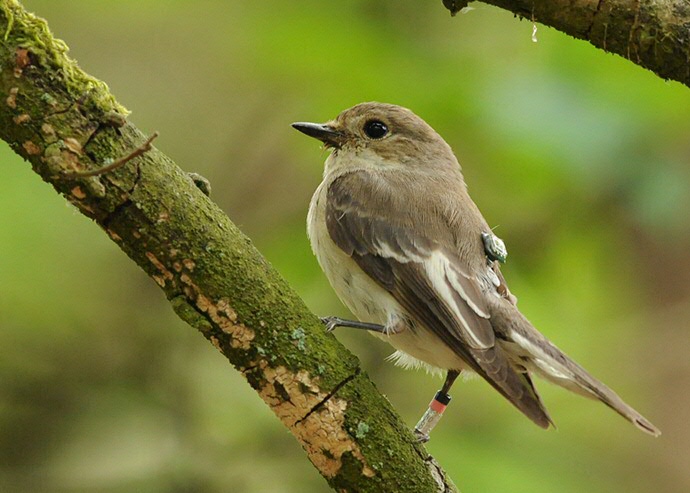Alternate non-stop migration strategies of pied flycatchers to cross the Sahara desert

Each year more than two billion songbirds cross the Sahara, but how they perform this formidable task is largely unknown. Using geolocation tracks from 27 pied flycatchers, a nocturnally migrating passerine, Janne Ouwehand and Christiaan Both show that most birds made diurnal flights in both autumn and spring. These diurnal flights were estimated to be part of non-stop flights of mostly 40–60 h. In spring, birds flew across the Sahara, while autumn migration probably circumpassed part of the desert, through a long oversea flight. Their data contradict claims that passerines cross the Sahara by intermittent flight and daytime resting. The frequent occurrence of long non-stop flights to cross the desert shows migrants' physiological abilities and poses the question why this would not be the general migration strategy to cross the Sahara.
More information
- Full publication in Biology Letters
- Contact: PhD Janne Ouwehand, Conservation Ecology Group, or: prof. Christiaan Both, Conservation Ecology Group
| Last modified: | 13 October 2022 08.55 a.m. |
More news
-
15 April 2025
1.5 million funding from Province of Groningen for innovative technology in the region
The University of Groningen will receive nearly 1.5 million euros in funding from the Province of Groningen to assist entrepreneurial academic researchers in developing innovative ideas into a startup.
-
15 April 2025
Nathalie Katsonis wins Ammodo Science Award 2025
For her pioneering research on molecular systems, Nathalie Katsonis receives the Ammodo Science Award for fundamental research 2025.
-
15 April 2025
Fundamental research with life-size effects
Nathalie Katsonis has won the Ammodo Science Award for Fundamental Research. She develops adaptive molecular materials and studies the chemical origins of life, which in turn yield insights for vaccines and clearing up oil spills at sea.
